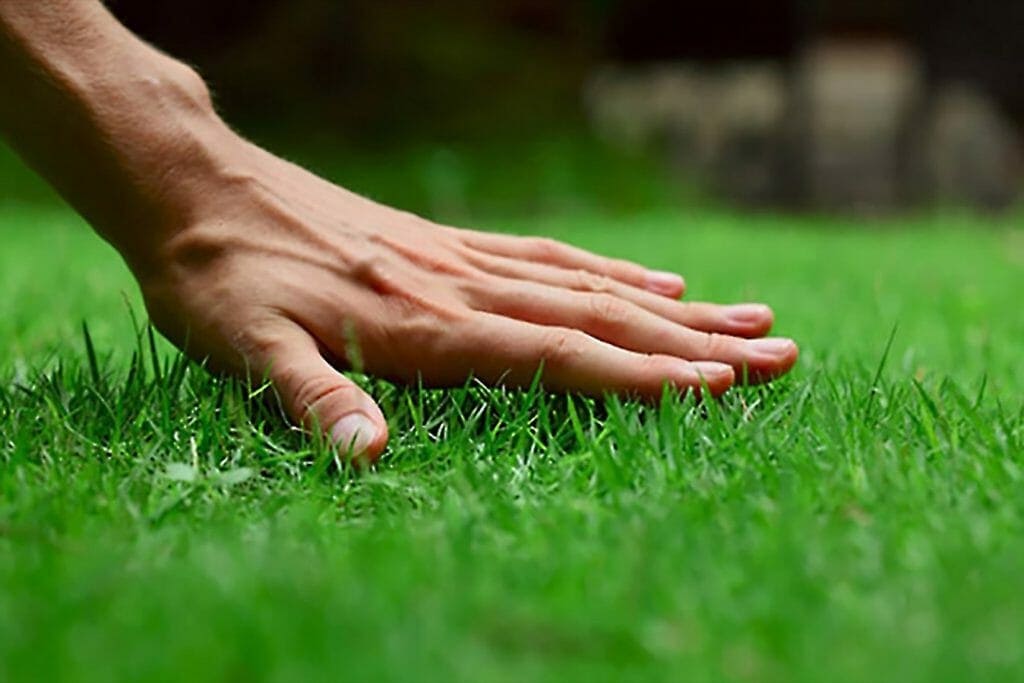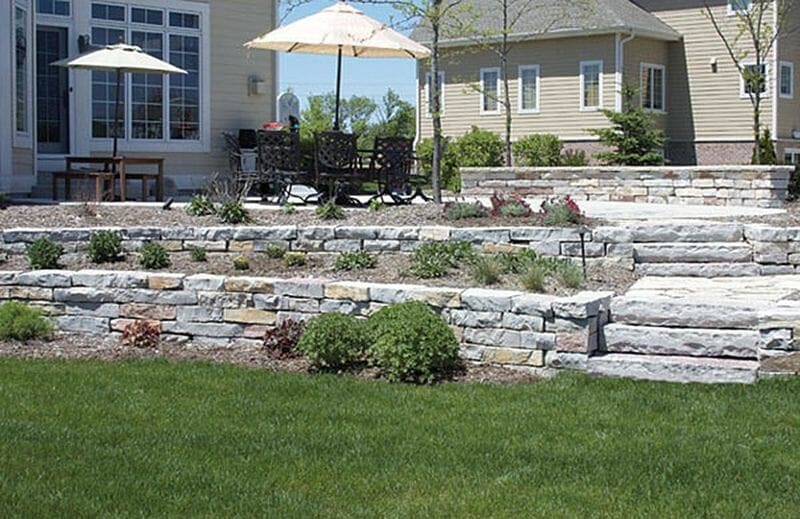Written by David Beaulieu and published on https://www.thespruce.com/
What are a few of the elements which produce a scene”pop?” That is the question we are going to be researching in such house landscaping pictures. I will start from a wide standpoint, contemplating particular regions of a lawn to which you ought to be paying attention. I will finish by zeroing in on more particular components found in a few of the world’s great landscapes, such as some quite vibrant plants.
The driveway entrance is your logical field of the lawn for us to start with. Why? Since the entrance to a driveway is also the entry to your lawn, as a whole. How your driveway entry is warmed, particularly when a house is bordered by a wall or fence (hence focusing attention on the entry ) sets the tone for your viewer’s perception of this entire lawn.
Components of Great Landscaping
What are some of the components that make a landscape “pop?” That’s the question we’ll be exploring in these home landscaping pictures. I’ll begin from a broad perspective, considering particular areas of a yard to which you should be paying attention. I’ll conclude by zeroing in on more specific components found in some of the world’s great landscapes, including some very colorful plants.
The driveway entrance is the logical area of the yard for us to begin with. Why? Because the entrance to your driveway is also the entrance to your yard, as a whole. How your driveway entrance is landscaped, especially when a property is bordered by a fence or wall (thereby focusing attention on the entrance) sets the tone for the viewer’s perception of the whole yard.
Consequently, the landscaping for your driveway shouldn’t be a mere afterthought. If you have a mailbox at the driveway entrance, consider the ground around the post to be a sub-section of the area and spruce it up as well.
Nor should you underestimate the visual impact of the driveway itself. In terms of square feet (relative to the rest of the yard) and visual prominence, a driveway can be a major part of a landscape.
Home Landscaping Pictures: Framing Your Home With Fencing
Borders play an important role in landscape design. Beyond the practicality of defining property lines; defined areas simply catch the eye more readily than ones which are ‘open-ended.’ Take a drive, and make it a point to note which landscape designs look more finished: you’re almost sure to find that properties set off by fencing or stone walls are more attractive than those with no such framing, all else being the same (similar homes, similar plant material, etc.).
In deciding upon and choosing a border for your landscaping project, consider the following resources on fencing:
Hedges: “Living Walls”
For plant-lovers, hedges may be preferable to fences as a means of defining a property. Hedges have the virtue of being “living walls.” You can find out how to plant hedges in my step-by-step tutorial with pictures.
If traditional, trimmed hedges are a bit too formal for your tastes, there’s another option: living walls composed of plants more loosely grouped. The growth habits of some shrubs lend themselves more to manicuring than do others. Boxwood is a good example of a shrub that is amenable to fastidious shearing, while forsythia is generally thought to look better when allowed to assume its natural shape.
Foundation Planting of Mixed Shrubs
Traditionally, foundation plantings were installed to hide the raised house foundations that were popular at the time in some regions. Many no longer feel that such plantings are necessary because house styles have changed (less house foundation to hide).
But there are still some good reasons to use foundation plantings:
- While a raised house foundation may be unattractive, a long uninterrupted wall of vinyl siding isn’t especially appealing, either.
- Foundation plantings soften the hard lines of a house, even one with attractive siding.
- Newly-built homes are sometimes plunked on an expanse of lawn devoid of mature trees. Foundation plantings can quickly counteract this rather bleak look.
- When landscaping in small spaces, you may just plain need the extra space if you enjoy growing a particular shrub!
- Foundation plantings consisting of evergreen shrubs can promote energy efficiency.
Home Entryway Landscaping
We already discussed landscaping around one kind of entryway: namely, driveway landscaping, the driveway being the entryway to one’s whole property. Now let’s consider the design for a second type of entrance: your home entryway landscaping.
One challenge in landscaping for front entryways is that you want the design to blend in reasonably well with the overall landscape design, while still standing out enough to provide a focal point.
One way to focus attention on the front entryway is to provide an attractive path leading up to the entryway.
Of course, what landscaping you install on the way to your front entryway will depend, in part, on pre-existing factors. For instance, those whose front entryway is at the top of a slope may wish to install ground covers in lieu of grass, to minimize landscape maintenance. And folks with large, open porches for front entryways, to cite another example, may wish to make liberal use of container gardens, perhaps on the porch steps.
Home Landscaping Pictures: Container Garden Design
Container garden design might reasonably be called “roving landscape design.” Why? Because container gardens are mobile components that can be called upon in a pinch to take care of a particular design task.
To name just a few examples, container garden design comes to the rescue:
- If you’re landscaping in small spaces
- If you’re trying to spruce up an area where digging is out of the question, as on decks, porches, patios, or driveways
- If you’d like to grow a particular plant over a septic tank drain field but are leery of the danger its roots pose to your septic system
- If you change your mind frequently (so you can swap out one color scheme for another)
- If you wish to grow tropical flowers in a cold climate (so you can move them inside when cold weather arrives)
Idea for a Color Scheme for a Yard
So far, the must-have components of a beautiful landscape we’ve considered have been areas of a yard; explaining why they’re visually important, and providing examples of how you can beautify these particular areas. Container gardens as a component handy for solving landscaping dilemmas have also been discussed. Now, let’s move on to a different subject: color scheme considerations for your yard.
To achieve a beautiful landscape, considering some of the top plant components you’ll have to choose from in designing your yard is important. While color is just one element in landscape design, you’ll certainly want to put a lot of your energy into choosing plants that will display a color scheme that’s right for you.
Picture of Hibiscus
Fall and springtime are transitional periods in many U.S. states, and both will be graced by abundant color in the yard, provided that you’ve been wise in your plant selection. Along with flowering trees, the flowering bushes so stunning in springtime are plants no landscape should be without.
A good flowering shrub for injecting color into the summer landscape is hardy hibiscus (pictured), also sometimes known as “dinner plate hibiscus.” Its blooms are enormous.
Dinner plate hibiscus is related to another well-known bush: Rose of Sharon. Indeed, the Hibiscus genus (to which both shrubs belong) is a summer standout in the North. Read my full article to find out more about some types of Rose of Sharon.
Finally, no conversation of springtime beauties of the flowering tree sort would be complete without mentioning the regal countenance and legendary perfume of the lilac.
Photos of Trees in Fall Foliage Colors
The spring landscape and the summer landscape receive most of our attention when it comes to planting. Why? Because after a long winter, we get the planting “bug” in spring, shopping feverishly at the local nursery. Of course, the nursery displays that catch our eye at this time will be geared to spring and summer, because the early part of the year is “prime time” for those plants.
As a result, it’s easy to forget to plant with autumn in mind, unfortunately. Yet the fall foliage season holds enormous promise for those landscaping enthusiasts willing to plan for it. Don’t be short-sighted and allow your yard to miss out on the colors offered by autumn’s bounty! The fall foliage standouts may not look like much when you shop at the nursery in the springtime, but these diamonds in the rough are well worth seeking out: their time will come, soon enough.
While there are some shrubs for fall foliage displays, too, trees are the true stars of fall foliage color. But you’re not restricted to the tall trees that will take years to mature. If you select a small specimen, such as the dogwood tree pictured above, in just a short time you’ll be enjoying a knockout fall foliage display in your own backyard.
Instant Focal Points: Water Fountains
We’ve looked at some of the plants you have to choose from in designing your yard. But there’s another component at your disposal for creating a beautiful landscape: hardscape. And water fountains are one of the hottest features in hardscape’s repertoire.
Like plants, water fountains are visually appealing. But water fountains boast a quality that plants generally don’t (with the exception of hearing tree leaves rustle when it’s windy out): they generate a pleasing sound for us to enjoy. With a simple pump, you can create a gurgling water fountain whose sound will soothe your nerves at the end of a hard day’s work.
Moreover, water — especially moving water — suggests coolness, even if we don’t touch it. Just being around water has a cooling effect on the psyche. For Feng Shui aficionados, installation of water fountains in the garden means profiting from the presence of one of the five elements (water, wood, fire, metal, and earth).
Original post here https://www.thespruce.com/home-landscaping-pictures-2132190/.



